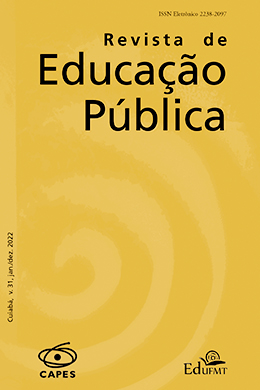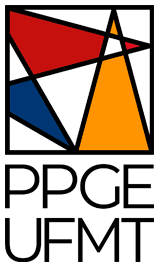Students’ perceptions on the use of the movie Wonder for developing speaking skills in an English class
DOI:
https://doi.org/10.29286/rep.v31ijan/dez.12802Keywords:
Cinema, Ensino de língua inglesa, Motivação, Habilidade oralAbstract
This study aims at analyzing, from students’ perception, how a set of activities with the movie Wonder (2017) contributed to the development of learners’ speaking skills in intermediate and advanced English classes. In order to reach the objectives, two questionnaires were applied in two classes of a language course: one before the movie exhibition and the development of activities and the other right afterwards. In the students’ perception, the movie, for addressing the bullying theme and being an authentic and interesting material, contributed considerably to the oral production in the class, increasing students’ motivation to communicate.
Downloads
References
ARAÚJO, A. R.; VOSS, R. C. R. Cinema em sala de aula: identificação e projeção no ensino/aprendizagem da Língua Inglesa. Conexão – Comunicação e Cultura, UCS, Caxias do Sul, v. 8, n. 15, p. 119-130, jan./jun. 2009.
BROWN, S. Teaching Listening. United States of America: Cambridge University Press, 2006.
CARLOS, E. J. Sobre o uso pedagógico da imagem fílmica na escola. ETD - Educação Temática Digital, Campinas, v. 19, n. 2, p. 550-569, abr. 2017.
CARMO, L. O Cinema do Feitiço Contra o Feiticeiro. Revista Ibero Americana de Educação, nº 32, p. 71-94, 2003.
DÖRNYEI, Z. The psychology of second language acquisition. Oxford: Oxford University Press, 2018.
ELLIS, R. Second language acquisition. Oxford: Oxford University Press, 2001.
EXTRAORDINÁRIO. Produção: David Hoberman e Todd Lieberman. Direção: Stephen Chbosky. Santa Monica: Lionsgate; Mandeville Films; Participant Media; Walden Media; TIK Films, 2017, 1 DVD.
GAK D. Textbook – An Important Element in the Teaching Process. Metodicki vidici, n. 2, Filozofski fakultet, Novi Sad, Serbia, p. 78-82, 2011.
GIRALDELLO, A. P.; TEDESCO, A. L. (Re)pensando o ensino-aprendizagem de línguas estrangeiras. Entretextos (UEL), v. 16, p. 25-42, 2016.
GUMESSON, D. W. B. A utilização de vídeos em aulas de Inglês para o Ensino Médio. Polyphonía, v. 21/2, p. 519-536, jul./dez. 2010.
HARMER, J. The practice of English Language Teaching. Excess: Logman, 2007.
HAUSMANN, E. P; CUGIK, L. S.; IGNACZUK, O. Filme como proposta de ensino e aprendizagem: O uso do cinema em aulas de Língua Estrangeira. Linguagens - Revista de Letras, Artes e Comunicação. Blumenau, v. 9, n. 3, p. 333-347, set./dez. 2015.
KRASHEN, S. D. Input hypothesis. London; New York: Longman, 1985.
LEONG, L.; AHMADI, S. M. An Analysis of Factors Influencing Learners’ English Speaking Skill. IJREE. 2017.
MORAN, J. O vídeo na sala de aula. Comunicação & Educação, (2), 27-35, 1995.
POTTER, L. E. Atividades de vídeo para o ensino de inglês. Barueri, SP: DISAL, 2013.
RICHARDS, J. C.; RENANDYA, W. A. Methodology in language teaching: an anthology of current practice. New York, NY: Cambridge University Press, 2007.
SARMENTO, S.; LAMBERTS, D. V. D. H. O Papel do livro didático no ensino de Inglês: Aspectos sobre sua importância, escolha e utilização. (Con)textos Linguísticos, v. 10, p. 291-300, 2016.
SILVA, A.; DUQUE, V. L.; SILVA, S. P. O uso de podcasts no desenvolvimento da oralidade em língua inglesa. Revista Pesquisas em Discurso Pedagógico. N. 2, 2012.
THORNBURY, S. Speaking instruction. In: BURNS, A.; RICHARDS, J. C. The Cambridge guide to pedagogy and practice in second language teaching. New York: Cambridge University Press, 2012.
UR, P. A course in Language Teaching: Practice and Theory. Cambridge University Press, Cambridge. 1991.
USHIODA, E. Motivation. In: BURNS, A.; RICHARDS, J. C. The Cambridge guide to pedagogy and practice in second language teaching. New York: Cambridge University Press, 2012.






















































